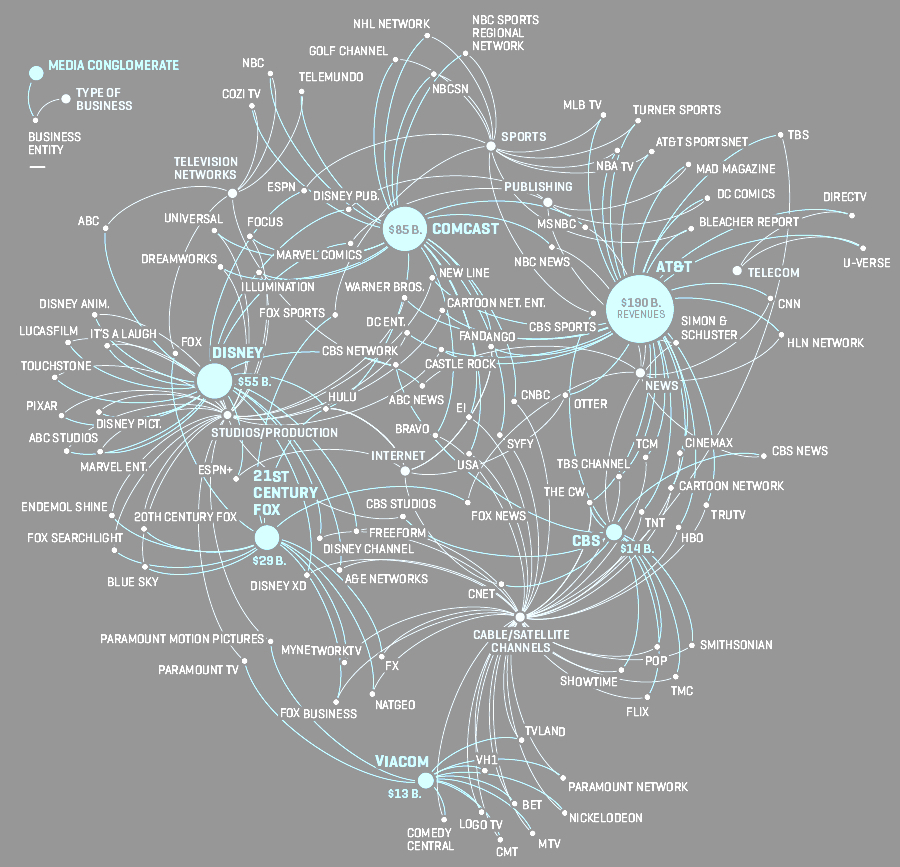Front matter
- Conferences on Monday for Response #2 drafts: schedule.
- Response #2
- End of Week 4: only 2 weeks left!
YouTube algorithms and radical politics online
- The article explains that YouTube has the second highest traffic on the web (after Google), seeing over 500 hours of video uploaded every minute. How would you describe your relationship with YouTube as you’ve grown up with it? When and why have you used it to consume content? What do you watch? When and why have you used it to produce content if at all? What have you produced?
- What is YouTube’s algorithm? How has it changed over time? Why have they changed it? What does Roosen tell us?
- Roosen says that the right has historically had a better sense of YouTube’s affordances and algorithms than the left has. He never explicitly says why, but there are clues. Why do you think this is the case? And how has the left responded?
- Cain’s viewing history between 2015-2018 is coded and charted in the article, showing how he gradually shifted from consuming right wing videos to left wing videos. As I commented, this seems to support Beck’s argument that people can change slowly over time. How much of this change do you think could be attributed to the algorithm and how much is Cain’s own growth?
Remixing our lenses
As we bring the second unit to a close on Monday, let’s review the 5-6 lenses of post-truth that I introduced since last week.
- technology/algorithms: “The Making of a YouTube Radical” (Kevin Roose)
- psychology/cognitive bias: “This Article Won’t Change Your Mind” (Julie Beck)
- American culture/conspiracy: “How America Lost Its Mind” (Kurt Andersen)
- economic/clickbait: “The Business of Internet Outrage” (The Daily)
- political/demagoguery: Chapters from Demagoguery & Democracy (Patricia Roberts-Miller)
- media/frame-checking: Chapter 3 from Reality Bites (Dana Cloud)
The texts you read included both claims/theories as well as evidence, examples, or case studies. Let’s use this chart to quickly map these through a variation of the holistic annotation. Each person take one from the list and complete the chart. The idea here is to get a bird’s eye view of the what’s possible when constructing a synthesis of these texts.
Homework for Monday
Response #2: Draft a 500-750 word essay that synthesizes three or more sources so far in this unit to evolve a central analysis, argument, or idea. At least one of your sources must come from the last two readings (Beck or Roose), though you are welcome to use both. Draw from the following source notes to help:
- Your marginal annotations from Cloud & Roberts-Miller
- Our pulled passages from Roberts-Miller [link]
- Lingering freewrites from The Daily, Anderson, Beck, and Roose [link]
- Holistic annotations chart from The Daily [link]
- Social annotations from Anderson, Beck, and Roose [hypothes.is]
- Our chart! [link]
Homework for Tuesday
- Revise Response #2 & post to WP
- Read the second half of Data & Society’s “Dead Reckoning” report, titled “Part 2: Strategies of Intervention.” Be ready to contribute to holistic annotation of this in class as it will be the basis for your final project.

